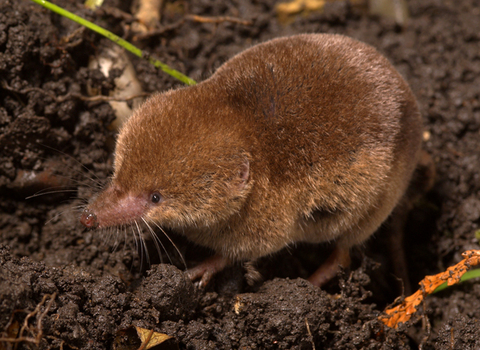
Common shrew ©Paul Adams
Common shrew
The diminutive common shrew has a distinctively pointy nose and tiny eyes. It lives life in the fast lane, eating every 2-3 hours to survive, and only living for a year or so. Look out for it in the garden.
Scientific name
Sorex araneusWhen to see
January to DecemberSpecies information
Category
Statistics
Length: 5-8cmTail: 2-4cm
Weight: 5-14g
Average lifespan: 1-2 years
Protected in the UK under the Wildlife and Countryside Act, 1981.
